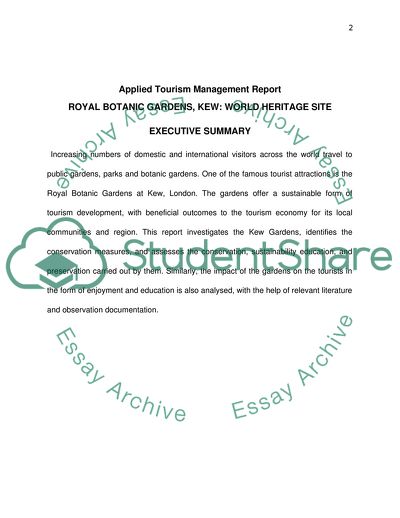Cite this document
(Tourism Management at Royal Botanic Gardens Report - 1, n.d.)
Tourism Management at Royal Botanic Gardens Report - 1. https://studentshare.org/tourism/1765569-you-are-required-to-write-a-1500-word-report-assessing-applied-tourism-management-at-a-specified-world-heritage-site-royal-botanic-gardens-kew
Tourism Management at Royal Botanic Gardens Report - 1. https://studentshare.org/tourism/1765569-you-are-required-to-write-a-1500-word-report-assessing-applied-tourism-management-at-a-specified-world-heritage-site-royal-botanic-gardens-kew
(Tourism Management at Royal Botanic Gardens Report - 1)
Tourism Management at Royal Botanic Gardens Report - 1. https://studentshare.org/tourism/1765569-you-are-required-to-write-a-1500-word-report-assessing-applied-tourism-management-at-a-specified-world-heritage-site-royal-botanic-gardens-kew.
Tourism Management at Royal Botanic Gardens Report - 1. https://studentshare.org/tourism/1765569-you-are-required-to-write-a-1500-word-report-assessing-applied-tourism-management-at-a-specified-world-heritage-site-royal-botanic-gardens-kew.
“Tourism Management at Royal Botanic Gardens Report - 1”. https://studentshare.org/tourism/1765569-you-are-required-to-write-a-1500-word-report-assessing-applied-tourism-management-at-a-specified-world-heritage-site-royal-botanic-gardens-kew.


